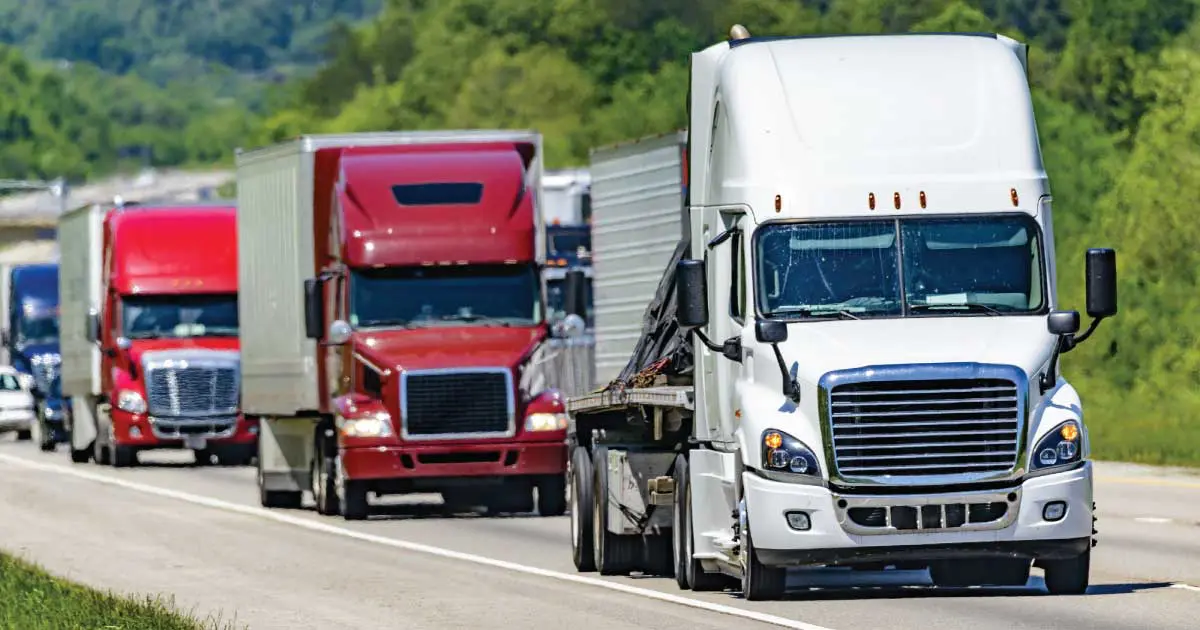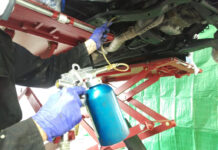Managing a trucking fleet comes with its own unique set of difficulties. Juggling complex deliveries, driver schedules, weather conditions, and the company budget can lead to many stressful days at the office.
Those aspects of trucking aren’t going anywhere, and as we move through the 2020s there have been even more challenges thrown into the mix.
The COVID-19 pandemic, supply chain issues, driver shortages, and recent gas price increases each have made things more difficult for trucking companies. Even seemingly positive things like the e-commerce boom have added stressors because of the sheer increased volume of deliveries.
With all that in mind, here are the five biggest issues facing the trucking industry:
Fuel Prices
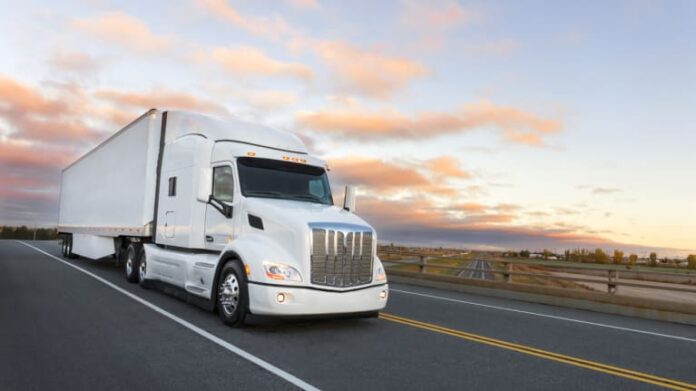
It’s no secret, gas prices have risen dramatically in 2025, and that has affected the trucking industry. Higher fuel prices raise operating costs for fleets, which in turn raise the price for lots of everyday goods since it’s more expensive to ship them from A to B. Fortunately, modern technology has made it easier for truckers to plan their routes more accurately and get the best value for their money with a trucker map app. This app allows truckers to view gas price maps, locate the cheapest stations along their routes, and even share information with other truckers.
One way to limit the pain at the pump is with a fleet fuel tracking system. A fleet fuel tracking system gives management deeper insights into their fleet’s fuel consumption and driving habits. It works by having GPS trackers installed inside vehicles that transmit location data, fuel usage, and other vehicle diagnostic information back to the home office.
Fleet fuel tracking can be used as a tool to decrease fuel consumption in your fleet since most systems track fuel-wasting activities like excessive idling, harsh starting and braking, and speeding. Managers can use this information to coach drivers out of bad habits, and if this is done at scale, it can significantly lower fleet fuel expenditures.
Training your drivers to travel in the most fuel-efficient manner possible will save your company money in the long run, and a fleet fuel tracking system from titangps.com is a great solution.
Driver Shortages
It’s tough to run a trucking company if there aren’t enough drivers available, but that has been the reality for trucking companies.
Driver shortages are expected to rise to 40% in 2025, and in 2025 the industry was short 80,000 drivers, per the American Trucking Associations. The numbers do not look good in the long term either, as the average driver is getting older and about 300,000 drivers leave the field each year, according to the U.S. transportation department.
With an aging workforce and not enough new drivers applying, this is a big problem for the industry and it does not look like there is an easy solution anytime soon.
Supply Chain Problems
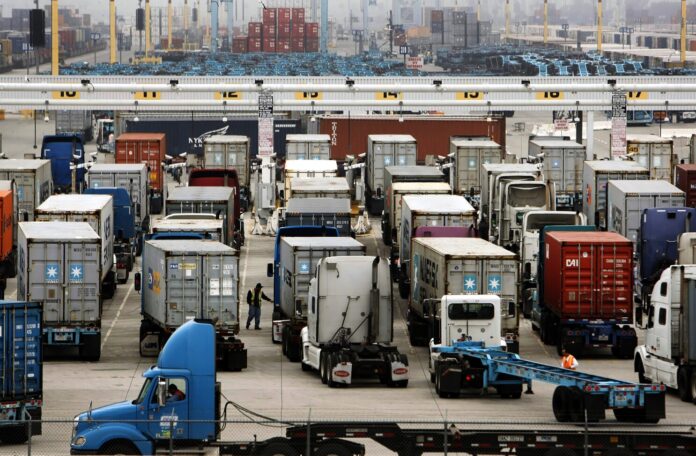
The global supply chain, much like fuel prices, has also been thrown out of whack in recent years. The COVID-19 pandemic and Russia’s invasion of Ukraine have exasperated supply chain woes, and it is affecting the trucking industry. Simply put, it is taking much longer for raw materials to be transformed into goods on sale to customers.
The trucking driver shortage is a big reason for this, and understaffed trucking companies are dealing with more and more deliveries without the drivers to match. That leads to orders getting backlogged and taking longer to get to the customer.
Supply chain issues affect trucking in a different way because it means it takes longer for trucks and truck parts to get shipped to trucking companies. If crucial truck parts aren’t coming in on time, then companies will have fewer trucks in rotation, which means orders will continue to take longer because fewer trucks are available to make deliveries.
Driver Compensation

One of the reasons many drivers are leaving the profession is because of their compensation. Truck drivers have to deal with long hours, the isolation that comes with the job, the physical stress of driving all day, and the personal trials of being away from home for long periods at a time.
All of that adds up. The average salary for an American trucker is in the $50,000 per year range, which is similar to what many other types of blue-collar jobs offer as well. The difference is, those other jobs don’t require their employees to be away from home for long periods at a time, so it makes sense why some truckers would opt for a job that is less time-intensive, like a delivery driver or working in a warehouse.
CSA
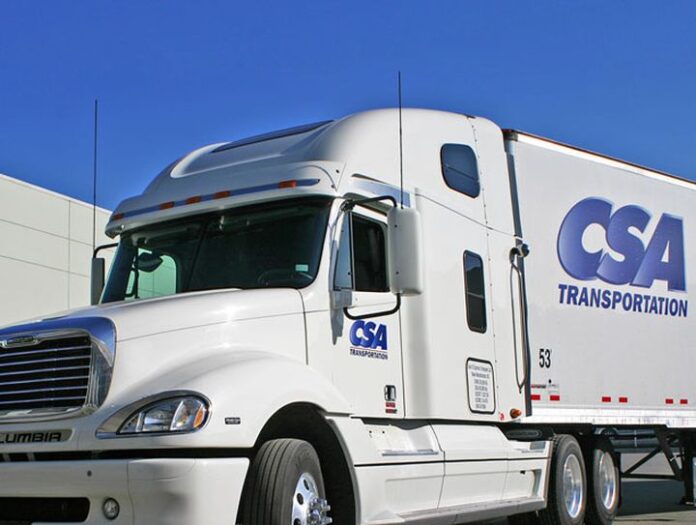
CSA, also known as compliance, safety, and accountability, is a program used by the Federal Motor Carrier Safety Administration to make sure trucking companies are staying safe on the road. It measures companies based on crash history and compliance. This isn’t an existential issue facing the industry as a whole, but CSA is still a commonly reported problem among trucking staffers.
It is just tough to be 100% safe and compliant across an entire fleet of trucks. Drivers have to deal with different regulations in different municipalities which can lead to confusion. For example, a truck could be inspected properly under the regulations in the United States, but not be compliant in Canada. Failing to do compliance inspections can result in expensive fines for a company.
Accidents are obviously huge concerns for trucking companies and management naturally becomes stressed when the collisions add up. Following CSA standards is important for any trucking company, but it still has its own set of challenges.
Conclusion
Whether it’s supply chain logjams, high fuel prices, or changes in driver employment, there are plenty of problems in the trucking industry. Of course, things change over time and some issues will be solved, but there will inevitably be new challenges that arise.
New technology has already changed the trucking industry and will continue to do so moving forward. But no matter what, new technology won’t solve everything, so companies will have to innovate and think of new ideas to keep business moving.
